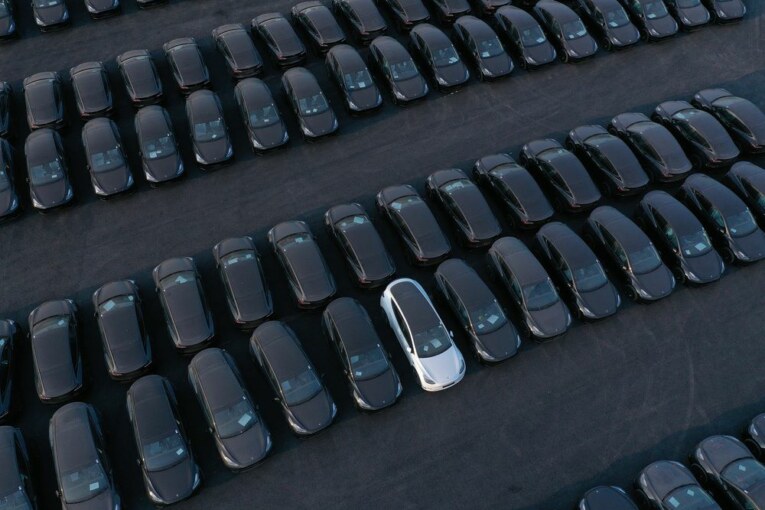
Dalhousie University engineer Jeff Dahn wants to create a battery that will never die. He wants you to be able to climb into your electric car and drive a million miles — 40 times the circumference of the world — before your battery finally sputters out.
Impossible? Maybe not. In March, Dahn received a Killiam Prize, a $100,000 grant given annually by the Canada Council of the Arts to five researchers “who have actively devoted their careers to pushing the boundaries of knowledge and finding solutions to the issues we face every day.”
The award was the latest acknowledgement that Dahn could be onto something big. In a 2019 paper published by the Journal of The Electrochemical Society (JES), Dahn said that his research group, which is sponsored exclusively by Tesla Inc. and the Natural Sciences and Engineering Research Council (NSERC), was close to finalizing a battery that could last for over 1.6 million kilometres.
“We think that lithium-ion batteries can last for a century with the right chemistry,” he said in an interview. The problem is time. Someone would need to track the battery’s performance from beginning to end, for a hundred years. “Proving that it can last a century actually takes a century,” Dahn added, laughing.

To be clear, this battery wouldn’t enable you to go a million miles without stopping. You’d need to charge it, but if you were using the battery cell Dahn presented with his team in October 2020, it would be able to withstand 10,000 charging cycles, corresponding to 5.3 million kilometres. In comparison, many electric vehicles have batteries that can only handle 800 cycles, about 320,000 kilometres.
The million-mile battery would probably outlast your electric car, so you would need to put it in another car, and then another one, but the battery itself would remain viable for decades.
‘We’re not like that’
Dahn is one of the pioneers of the lithium-ion batteries that are now used worldwide in everyday devices such as laptops, cars, and cellphones. He refuses to take full credit.
“This is an effort that involved scientists, engineers, manufacturing specialists all over the world, from virtually every country on the planet,” Dahn said. “My contributions were small by comparison.” He added that his graduate and postdoctoral students also played an outsize role.
His research focus has since shifted to long-lifetime batteries, an area he believes is cutting edge.
“There are no other academic groups in the world that work on developing really long, decades or longer, lithium-ion cells,” Dahn said. “Most academics are looking for a quick home run with a gee-whiz paper in Science or Nature. We’re not like that. We’re trying to really make a difference and do something useful.”
While a long-lifetime battery would be a nice-to-have for the average consumer, they will be essential for commercial vehicles such as taxis and long-haul trucks, as most rich countries are on track to phase out internal combustion engines within a couple of decades. Elon Musk, Tesla’s founder and majority shareholder, wants to see these batteries power a fleet of self-driving taxis.
Dahn’s research is “going to be essential not only to transportation,” said Marc Fortin, vice-president of research partnerships at NSERC, “but also for more sustainable, greener energy sources in the future… This has many important applications, not only for Tesla, but for many other areas.”
We’re trying to really make a difference and do something useful
Jeff Dahn
Like Musk, Dahn believes electric vehicles are the future. He’s on the waiting list for three electric cars, and he’ll take whichever becomes available first. “Get into an electric vehicle. Try it,” Dahn said. “You’ll never go back to gas.”
By 2035, gasoline-powered vehicles will no longer be available for purchase, according to the federal government. Enormous electric vehicle battery plants are popping up all over the world, many of which can produce billions of watts of energy, earning them the venerated title of “giga factory.” The federal and Ontario governments just announced that Windsor will be home to Canada’s first giga factory, which will produce 45 gigawatt hours of energy annually, enough to power 5,000 homes.
Half of the output of that plant could power the entirety of the province of Nova Scotia for one day, Dahn said. But as it currently stands, that energy is earmarked for cars, not households.
“All those batteries are spoken for,” Dahn said. “They’re going into vehicles. In fact, every giga factory around the world that is making lithium-ion batteries — all their output is spoken for.”
Dahn sees these batteries as a means of solving the energy crisis, and mitigating the effects of climate change. “So if you think you’re going to get us off fossil fuels, what are you going to use for energy storage? You have to use the cars,” he said. “That’s where the batteries are. They’re in the cars.”
In Dahn’s vision of the future, electric cars double as renewable energy storage devices. “You have to be able to store (renewable) energy for when the wind isn’t blowing, and the sun isn’t shining,” he said. Equipped with long-lifetime, million-mile batteries, electric cars of the future will be brimming with unused energy. When the car is parked and night has fallen, excess energy can be redirected back into the grid to power homes, buildings, and anything else connected to the grid. Cars will no longer just consume energy, but could be a valuable source of energy.
This process is called Vehicle-to-Grid, or V2G, and it’s something Dahn is really excited about. In order for this to work, the batteries need to be extremely powerful. That’s why he’s hoping to finalize a battery that can last several thousand charging cycles.
V2G sounds great, but it will require buy-in from energy companies, car manufacturers, and governments, said Dahn. It will also require smart technology and “vehicle-grid integration.” In other words, charging stations will need to be bidirectional in order to push and pull electricity between the cars and the electric grid. They will also need to be equipped with software that communicates with the grid to direct the energy where it is needed.
When asked how long this could take to implement, Dahn said, “It’s got to be less than 50 years for sure, otherwise we’re going to be so hot on the planet, it’ll be terrible.”
Dahn said that he’s seen a lot of promising research on alternatives to lithium-ion batteries for energy storage, including gravitational storage, where large quantities of renewable energy are stored by lifting heavy objects, and dispatched by releasing them; new kinds of battery technologies such as iron-air, which some say can deliver 100 hours of electricity at one-tenth the cost of a lithium-ion battery; sodium-ion batteries, which are slightly less energy-dense than lithium-ion, but cheaper; and solid-state batteries, which promise to hold more energy and be safer than a lithium-ion battery.
“We need them all. We need them all because it’s a war,” Dahn said. “It’s a war on climate change. We need everyone coming to the table to win this war.”
• Email: [email protected] | Twitter: marisacoulton
You can read more of the news on source
